Problems persist as nervy Spain just do enough – Tactical Analysis
-
Updated: 19 June, 2012
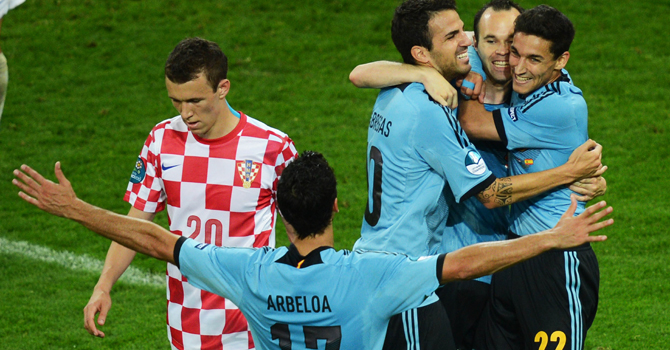
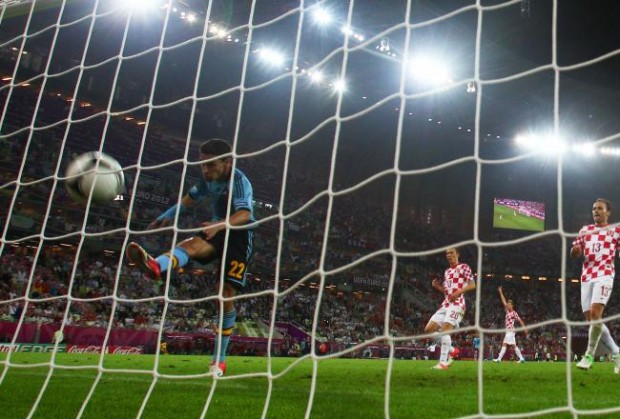
The final group game for both sides brought the usual list of permutations which could ensure qualification for either side. Amidst all the talk around the multiple outcomes and Italian cries of fair play, without any hint of irony, for Spain and Croatia to avoid a 2-2 which would see Italy eliminated irrespective of their result, a game of football threatened to break out. Almost, but not quite.
Spain won with a late goal from Jesus Navas and, combined with Italy’s 2-0 win over Ireland, this sent Croatia home from Euro 2012. This was a drab, scrappy game with Spain poor. It became increasingly nervy for supporters of a Spanish persuasion as the game wore on. Del Bosque confirmed the lack of quality on display in the post match press conference, saying: “The truth is it was not a great game overall and this should concern us. Things didn’t go according to plan.”
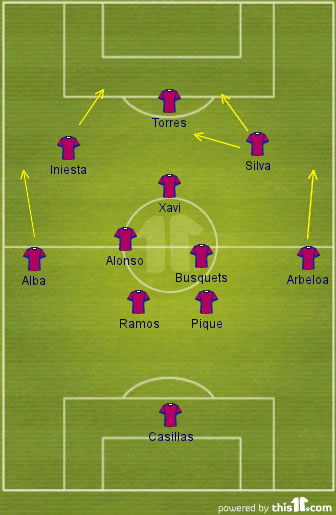 Line Ups
Line Ups
Del Bosque retained faith with the same players who had beaten Ireland with ease in the previous group game. Jelavic and Perisic dropped to the bench for Croatia to be replaced by Pranjic on the left of midfield and Vida at right back.
Although appearing as something akin to a 4-2-3-1 on paper, Croatia switched to a 5-3-2 in the defensive phase with Srna dropping deep to cover for the forward runs of Alba. Vida subsequently tucked in as something of a makeshift centre back. Modric took up an advanced role just behind Mandzukic and sought to run into the channels, primarily to the left, either side of the central striker.
The Italian Job – Part 2?
From the outset, it was clear that, although Croatia were not following the same game plan as Prandelli had utilised with Italy, there were many broad similarities. Croatia fell into a back five when defending with Srna acting as more of a conventional right wing back than Strinic, who was more conservative, on the left. The midfield three stayed close to the defence and narrow to prevent Spain from passing their way through the midfield. Pranjic tucked in on the left which left Arebloa free but he was never able to take advantage of this space.
In the attacking department, Modric and Mandzukic, to a lesser extent, both sought to run into the channels and find the space vacated by the Spanish full backs who occupied very high starting positions.
Allied to this was the deliberate ploy of breaking the game up with fouls ranging from niggly to the downright cynical during the first half (Srna being the prime suspect here) which prevented Spain from developing any rhythm.
Pass, pass, pass etc
Spain continued their trend at Euro 2012 of dominating possession but playing with little intensity during the opening half of the game. Alba and Arbeloa took up very high positions from the outset but Arebloa was seldom utilised on the right despite his space whilst Alba was closely watched by Srna.
In the centre Alonso dropped between Pique and Ramos when Spain took possession, helping switch play on occasion but the passing was far too slow and ponderous. Silva frequently left his right wing berth and adopted a very central position further narrowing the game. As ever, the central area of the pitch was congested and the passing speed deteriorated as the half progressed.
The one player who sought to eschew the incessant passing was Iniesta who, as demonstrated against Italy, would make darting forward runs towards the Croatian defence. Overall, Spain had 64% possession but they need to produce a final product to ensure overall control of the game.
Croatian Set Pieces
On the few occasions that Croatia won a set piece in the Spanish half, a number of players moved forward in anticipation of an aerial delivery into the penalty area. Spain are weak aerially and often appear chaotic when defending se pieces. Yet, this can often be an ideal opportunity for Spain to break down a defensive opponent.
The transition offers Spain a number of possibilities if they can move forward at pace whilst the opponent is still moving back into position.
These opportunities though are seldom grasped by the Spanish either through a lack of pace or through seeking an additional touch or pass when a more direct movement is required. The lack of directness is apparent in other elements of the Spanish play.
David Silva is often the guilty party. In the 40th minute he was over indulgent in the penalty area, shifting the ball from side to side before his shot was blocked. In the 62nd minute, Spain had a quick counter attack but Silva took an additional touch on the halfway line instead of releasing the forward pass and was tackled, losing possession.
Del Bosque made the first Spanish change with Torres exiting to be replaced by Navas in the 59th minute. Although this provided Spain with more width and variation in their game, the removal of Torres was arguably wrong.
When Spain had opportunities they were arriving on the transition. Silva lacks genuine pace and always prefers to take an additional touch as discussed above. In addition to this, removing Torres meant Spain lacked a central reference point. If Navas beat his opponent and reached the goal line, who would he cross to?
The substitution was a conservative move and demonstrated del Bosque’s belief in keeping control of the game. The heat map below demonstrates the worth of Navas in stretching the game and providing width and pace in the Spanish attack. Navas will attack the goal line and look for cut backs. It forces defenders to turn and move back towards their goal whereas normally the Spanish play in front of you.
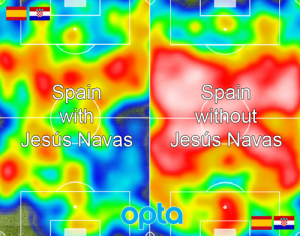
Substitutions
Even if Navas can be frustrating on occasion and his final ball can lack quality, he brings something else to the game which no other Spanish player offers.
This contrasts sharply with the Croatian substitutions although Bilic had to seek a winning goal, a draw was no use to Croatia at this point. Had this been the first or second group game, Bilic would most likely have continued with the same game plan. Here, he had to seek a solution.
Croatia moved from their 5-3-2 formation to a more positive 4-4-2 with the removal of Vida and Pranjic with Jelavic and Perisic coming on.
With hindsight, perhaps Bilic should have made the move earlier in the second half rather than waiting.
Del Bosque’s second substitution was the straight swap of Fabregas for Silva which must leave Fernando Llorente and Alvaro Negredo wondering why they are in the squad.
Another conservative move and one which seeks the control of the midfield area at all costs.
Jesus Navas Goal
Supporters of del Bosque will claim the goal exonerates his decisions and to a degree there is truth in that. However, the goal arose because Fabregas had space to move into with Croatia abandoning their more circumspect formation as they chased the game. With neither Vukojevic now off the pitch and Rakitic also pushing forward, the Spanish could run at the Croatian defence.
The goal itself was superbly crafted and executed with a deftly lobbed ball through to Iniesta who square for Navas to walk the ball into the net.
Conclusions
Spain are through and publicly, the squad and staff are likely to confirm that the first goal of the tournament has been achieved but privately there must be reservations over the manner of their play at times.
The ball was recycled far too slowly and the lack of width has still not been fully resolved. Del Bosque will be criticised for the performance in the Spanish press. Bilic set his team out well and can take credit despite the defeat.
Spain won by remaining true to their beliefs in tiki taka but the margin for error tonight was virtually non-existent. They could easily have drawn or even lost the game. The easy games for Spain, as such, are over. More demanding and tougher challenges await when there will be no margin for error.


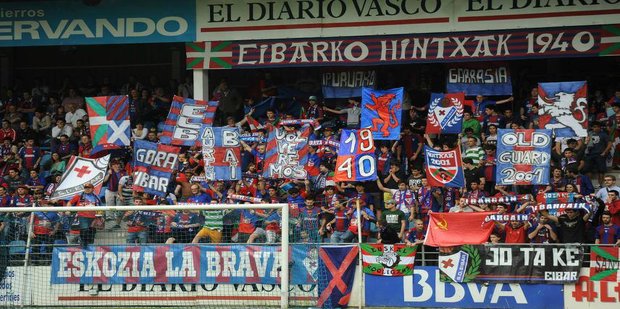

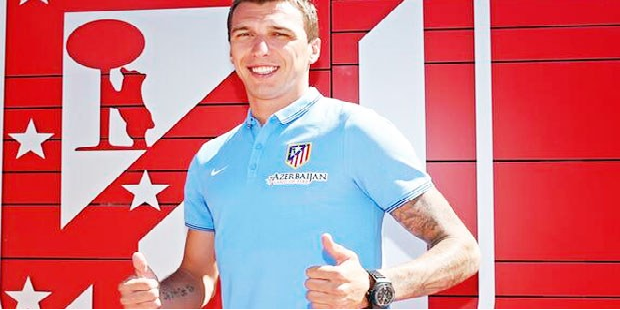

You must be logged in to post a comment Login